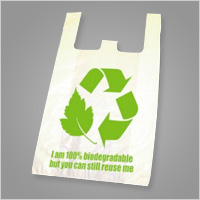

The bioplastic is a type of plastic biodegradable as coming from renewable vegetable raw materials annually. The decomposition time is a few months in composting against 1000 years required by synthetic plastics derived from petroleum. Bioplastics currently on the market are mainly composed of flour or corn starch, wheat or other cereals. In addition to being biodegradable (according to the European Standard EN 13432 and certification programs issued by major international institutions), they have the advantage of not making the barren land on which they are deposited. Bioplastics, after use, you can get fertilizer from fertilizer products produced as biopiatti, biobicchieri, bioposate, and use it for agriculture.
To date these products are mostly polyethylene, polypropylene, etc., Exclusively synthetic materials derived from petroleum, difficult to recycle. The bioplastic, in agriculture for mulching in the form of BioTelo, solves the problem of disposal since the film is left to decompose naturally on the ground. After criticism early on the strength of the envelopes made from bioplastics, we are arrived at the end of 2011 on the market bags of superior resistance to previous products with a thickness (23 microns) and a weight (over 16 grams) more.
Among the products on the market some are certified by ICEA whose logo is shown on the shopper.
The advantages of a "biological material" are:
It is an alternative to tasks without further recycling and re-use for consumers: the organic waste can theoretically be deposited in the landfill, given their rapid biodegradability. The environmental impact of this choice of disposal is lower than both the incineration of organic waste, both to composting, in terms of required energy and process emissions. Compression of waste to reduce its volumetric density takes 5-10 minutes per tonne of waste (very little energy) and has zero emissions (the pressure of the waste is not a chemical process, but mechanical, does not generate fumes).
It reduces the waste management costs in the case where the organic materials begin to replace glass, plastics and recyclable waste; or in the case in which food manufacturers use organic materials for packaging and the producers of immettano plastics in biodegradable plastics trade. This allows you to decrease the waste containers on the territory (by eliminating those of paper, glass and plastic) and logistic costs of storage (waste periodically loaded from a truck for paper, one for plastic, etc., They would likely load "on a daily basis "along with all the other), it would be necessary oversizing of the capacity of the waste containers and trucks for their transport.
Biodegradability and natural decomposition in a short time.
fertilizer manufacturability because the substance is a fertilizer. For example, the wet fraction of household waste can be collected in bags of bioplastic, and mass in the composter.
Minor emissions of toxic fumes in case of incineration.